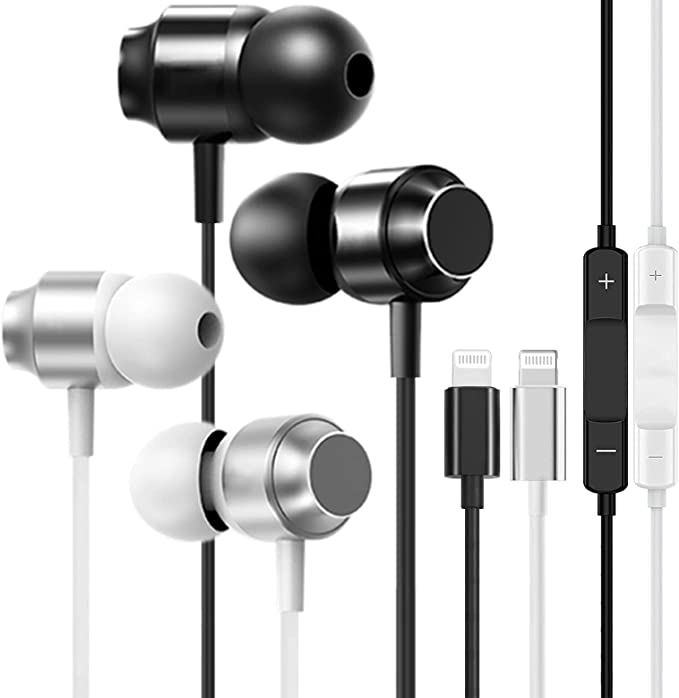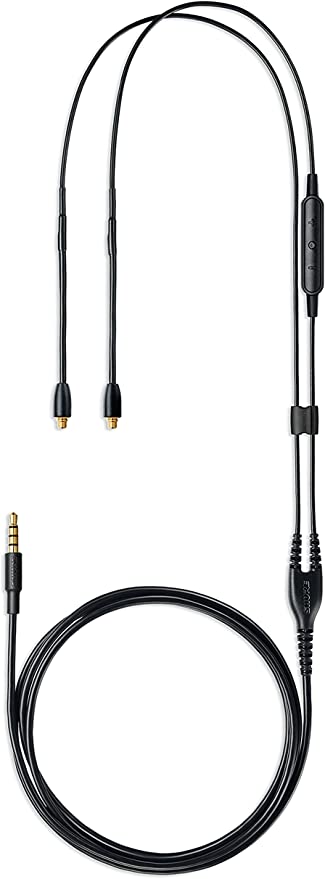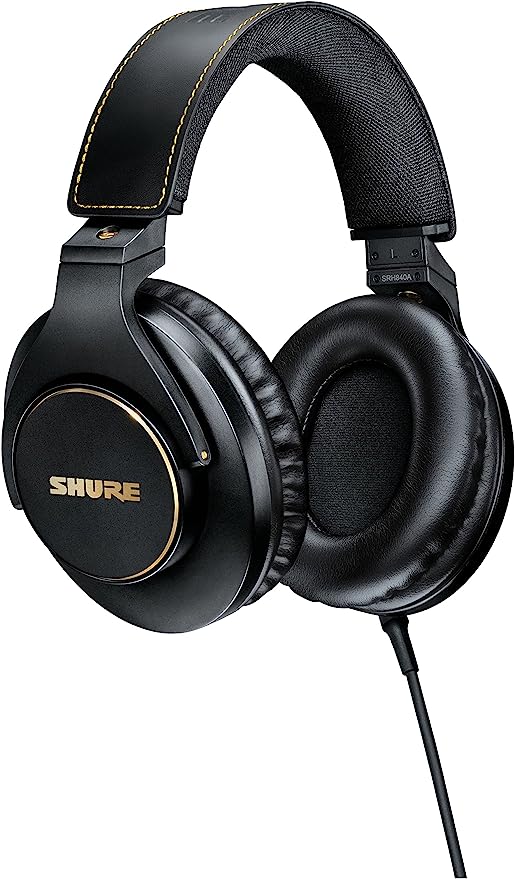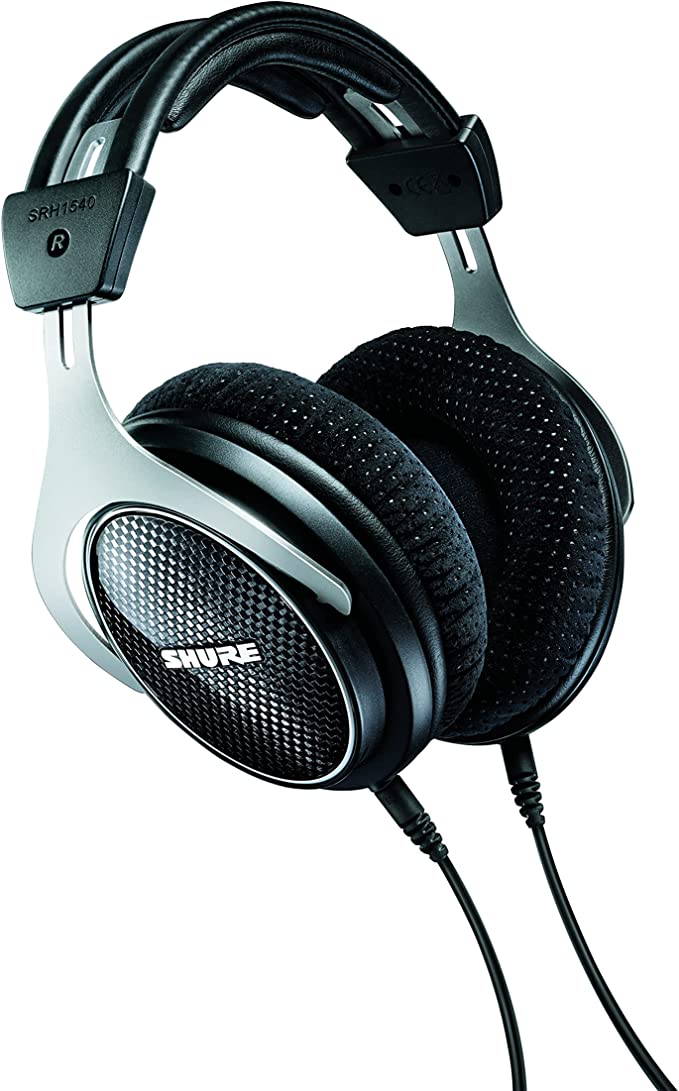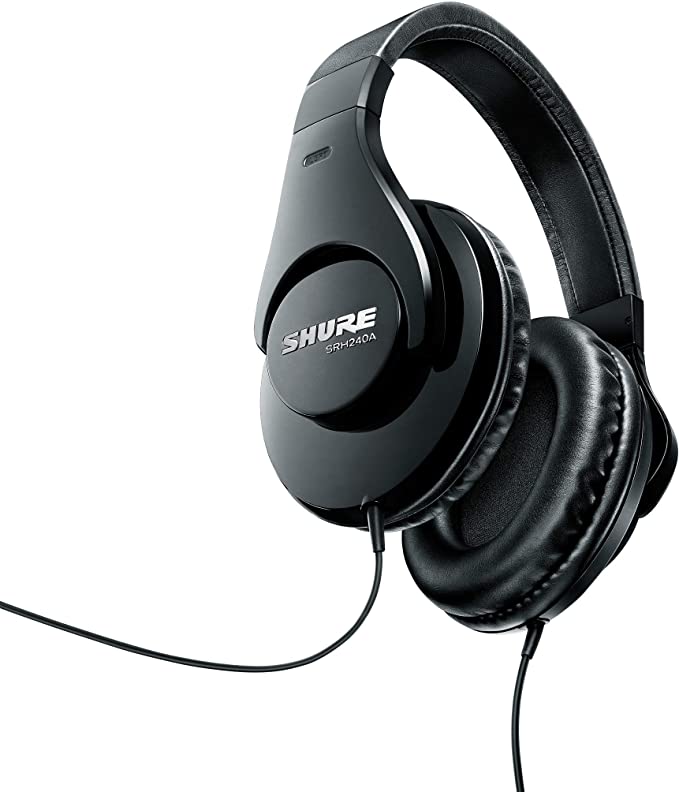Shure SM4 Studio Recording Microphone Kit: Crystal-Clear Audio for Home Studios
Update on March 20, 2025, 4:14 a.m.
The pursuit of pristine audio quality in a home recording environment can often feel like a battle. You’re fighting against a constant barrage of unwanted sounds: the hum of your computer, the rumble of traffic outside, the neighbor’s enthusiastic (but off-key) karaoke practice. Add to that the challenges of electronic interference and the complexities of microphone technology, and it’s easy to feel overwhelmed. But achieving professional-sounding recordings at home is possible, and the right microphone is your most powerful weapon.

Demystifying Condenser Microphones
Before we dive into the specifics of the Shure SM4, let’s take a moment to understand the type of microphone we’re dealing with. The SM4 is a condenser microphone, a type favored in studios for its sensitivity and detail. But how does it actually work?
Imagine a tiny, incredibly thin membrane (the diaphragm) stretched taut like a drumhead. This diaphragm is electrically charged, and positioned very close to a stationary metal plate (the backplate). When sound waves hit the diaphragm, it vibrates. These vibrations change the distance between the diaphragm and the backplate, which in turn changes the electrical capacitance. This fluctuating capacitance is then converted into an electrical signal that represents the sound wave.
This is fundamentally different from a dynamic microphone, which uses a moving coil within a magnetic field to generate a signal. Dynamic mics are generally more rugged and can handle louder sound sources, making them popular for live performances. Condenser mics, however, tend to be more sensitive and capture a wider range of frequencies, resulting in a more detailed and nuanced sound – perfect for capturing the subtleties of vocals and acoustic instruments in a controlled environment. Because of their design, condenser microphones like the Shure SM4 need a power source to charge the diaphragm. This is provided by phantom power, a 48-volt DC current typically supplied by an audio interface or mixer.
Meet the Shure SM4: A Home Studio Workhorse
The Shure SM4 Studio Recording Microphone Kit (SM4-K-KIT) is specifically designed to address the challenges of home recording while delivering the clarity and precision associated with professional studio equipment. It’s built on Shure’s long-standing reputation for quality and durability, and packs a number of features into a sleek, all-metal design.
Under the Hood: Exploring the SM4’s Technology
Let’s take a closer look at what makes the SM4 tick:
The Dual-Diaphragm Advantage:
The SM4 boasts a 1-inch, brass, dual-diaphragm capsule. While many condenser microphones use a single diaphragm, the dual-diaphragm design offers several potential advantages. By using two diaphragms, often with one optimized for low frequencies and the other for high frequencies, the microphone can achieve a more consistent and accurate response across the entire audible spectrum. This can result in a smoother, more natural sound, particularly in the low-end, where single-diaphragm mics can sometimes struggle. The use of brass, a dense and resonant metal, also helps the microphone.

Cardioid: Your Secret Weapon Against Noise:
The SM4 utilizes a cardioid polar pattern. Think of it as a heart-shaped “listening” area around the microphone. The mic is most sensitive to sound coming from directly in front (where the point of the heart would be), while rejecting sound from the sides and rear. This is incredibly useful in a home recording setting, where you want to capture your voice or instrument while minimizing unwanted background noise. By strategically positioning the microphone, you can effectively isolate your sound source and create a cleaner, more professional recording.
Silence the Buzz: Mastering RF Interference:
Have you ever noticed a strange buzzing or humming sound in your recordings, especially when your cell phone is nearby? That’s likely radio frequency (RF) interference. Our modern world is saturated with electromagnetic signals from cell phones, Wi-Fi routers, Bluetooth devices, and countless other electronics. These signals can be picked up by microphones, resulting in unwanted noise.
The Shure SM4 tackles this problem head-on with its patent-pending interference shielding technology. This shielding acts like a barrier, blocking out those pesky RF signals and ensuring a cleaner, interference-free recording. This is a particularly valuable feature in today’s increasingly wireless world.
Pop Filters: Taming Those Pesky Plosives:
Say the word “pop” forcefully into a microphone. Notice that burst of air? Those are called plosives, and they can create unpleasant popping sounds in your recordings, especially with vocal tracks. The SM4 addresses this issue with not one, but two pop filters.
There’s an internal pop filter built into the microphone’s design, and the kit also includes a detachable magnetic pop filter that you can position in front of the mic. These filters act as a barrier, diffusing the air blasts from plosives before they reach the microphone capsule, resulting in cleaner, more professional-sounding vocals.

Putting the SM4 to the Test: Real-World Applications
The Shure SM4 is a versatile microphone that can be used in a variety of home recording scenarios:
- Podcasting: The cardioid polar pattern and RF shielding are ideal for capturing clear, focused vocals while minimizing background noise and interference.
- Vocal Recording: The dual-diaphragm design and pop filters help to capture the nuances of your voice with warmth and detail.
- Instrument Recording: The SM4 can be used to record a wide range of acoustic instruments, from guitars and pianos to strings and woodwinds.
Beyond the Microphone: Essential Recording Tips
While the SM4 is a powerful tool, it’s important to remember that a microphone is just one part of the recording chain. Here are a few tips to help you get the most out of your recordings:
- Microphone Placement: Experiment with different microphone positions to find the sweet spot for your voice or instrument. As a general rule, start with the microphone about 6-12 inches away from the sound source.
- Gain Staging: Set the input gain on your audio interface so that the signal is strong but not clipping (distorting).
- Acoustic Treatment: Even a small amount of acoustic treatment, such as foam panels or blankets, can significantly improve the sound of your recordings by reducing reflections and echoes.
The Shure Legacy: A Tradition of Quality
Shure has been a leader in the audio industry for almost a century, and their microphones have been used on countless iconic recordings. The SM4 builds on that legacy, offering professional-quality sound and rugged construction at an accessible price.

Final Thoughts: Is the SM4 Right for You?
The Shure SM4 Studio Recording Microphone Kit is an excellent choice for home recordists, podcasters, musicians, and content creators who are looking for a high-quality, versatile microphone that can deliver professional-sounding results. Its combination of a dual-diaphragm design, cardioid polar pattern, RF shielding, and dual pop filters makes it well-equipped to handle the challenges of home recording, while its all-metal construction ensures durability and longevity. While it does require phantom power (a standard requirement for condenser microphones) and offers only a cardioid polar pattern, its strengths far outweigh its limitations for most home studio applications. If you’re serious about improving the quality of your recordings, the Shure SM4 is a worthwhile investment.

